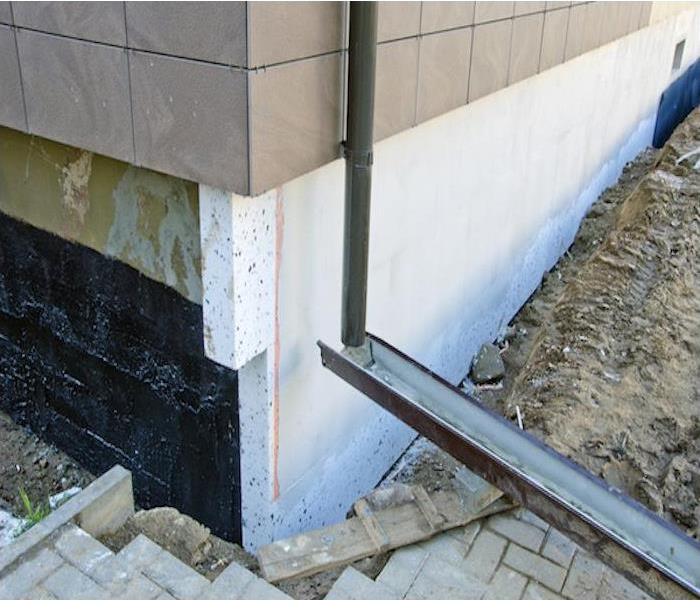4 Ways to Protect Your Foundation
11/30/2016 (Permalink)
A sturdy foundation is integral to the stability of your home. Issues with the foundation can cause structural issues with the home which will result in thousands of dollars of damage and can create issues that would require further repair. There are measures you can take to protect your home from such a problem and to check to make sure that the foundation of your home is properly protected.
Grading to Keep Water Away from the Foundation
If the excavation of soil is done poorly around a house, the water could potentially be directed toward the base of that house and could funnel into the foundation. To avoid this problem, the yard should be graded at least six inches in 10 feet, which will ensure that the soil slopes away from the house. To make sure that the slope is enough to avoid such an issue, you can simply use a leveling tool. With one end of the level where the ground meets the foundation wall and the other end sticking out, measure the space from the end hovering over the ground to the surface of the ground. This will tell you the slope. If you are using a two-foot level, simply multiple the results by five to find what it would be at 10 feet.
Direct Water Away from the Foundation
Any downspouts of the house should be directing water away from the house and its foundation. This will ensure that any rainwater or roof runoff is flowing away from the house and not down into the foundation. To avoid the water flowing down into the foundation, the downspout should extend five to 10 feet away from the house, otherwise it will simply be dumping water onto the foundation which can cause extensive damage. While simply purchasing extenders is a way to handle this situation, there is another way. You can bury a long diverter underground which will drain the water all the way to the curb, to a storm drain, or to a spot that is further out in the yard where the water will be of no danger to the foundation.
Avoid Dry Soil
When soil around the house completely dries out, it has the ability to contract, then expand when it gets wet again. It’s important to avoid letting any soil that is around the home become completely dry during any long dry spells as the next time it rains, the soil could become soaked causing it to expand and put stress on the foundation walls. You can avoid this problem by running a soaker hose around the house about six inches away from the foundation and three inches underneath the soil any time there is a drought. This will keep the soil from contracting and expanding, keeping your foundation safe.
Protect Your Foundation from Roots
During a drought, there is only so much moisture to go around, so tree and shrub roots are forced to share moisture with the soil. Lacking enough moisture to go around, this issue can cause the foundation to settle and sink unevenly. The result of this is that drywall can crack and windows and doors may stick to their frames. The way to avoid this problem is by planting any deep-rooted trees and shrubs away from the home. If the branches of the trees or shrubs are touching the house, they are too close and can potentially cause a problem.
Damage to a home’s foundation is a serious problem. In addition to causing structural issues for the house, it also has the ability to cause problems to drywall, windows, doors, and floors. The result of the foundation issues could be thousands of dollars of damage to correct multiple problems throughout the house. But water damage can be corrected with little to no permanent damage if it is caught fast enough and if the appropriate steps are taken to correct the situation. The difference between a quick notification and waiting could be devastating. If you suffer water damage to your home, it is important that you contact that professionals at SERVPRO right away to ensure that the matter is properly handled to avoid any further damage and to correct the situation right away.

 24/7 Emergency Service
24/7 Emergency Service
